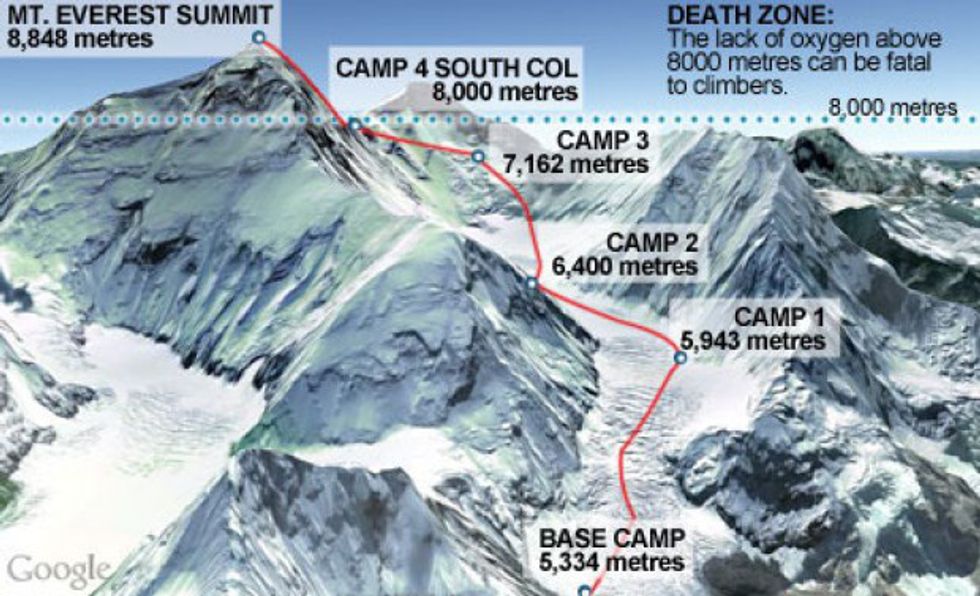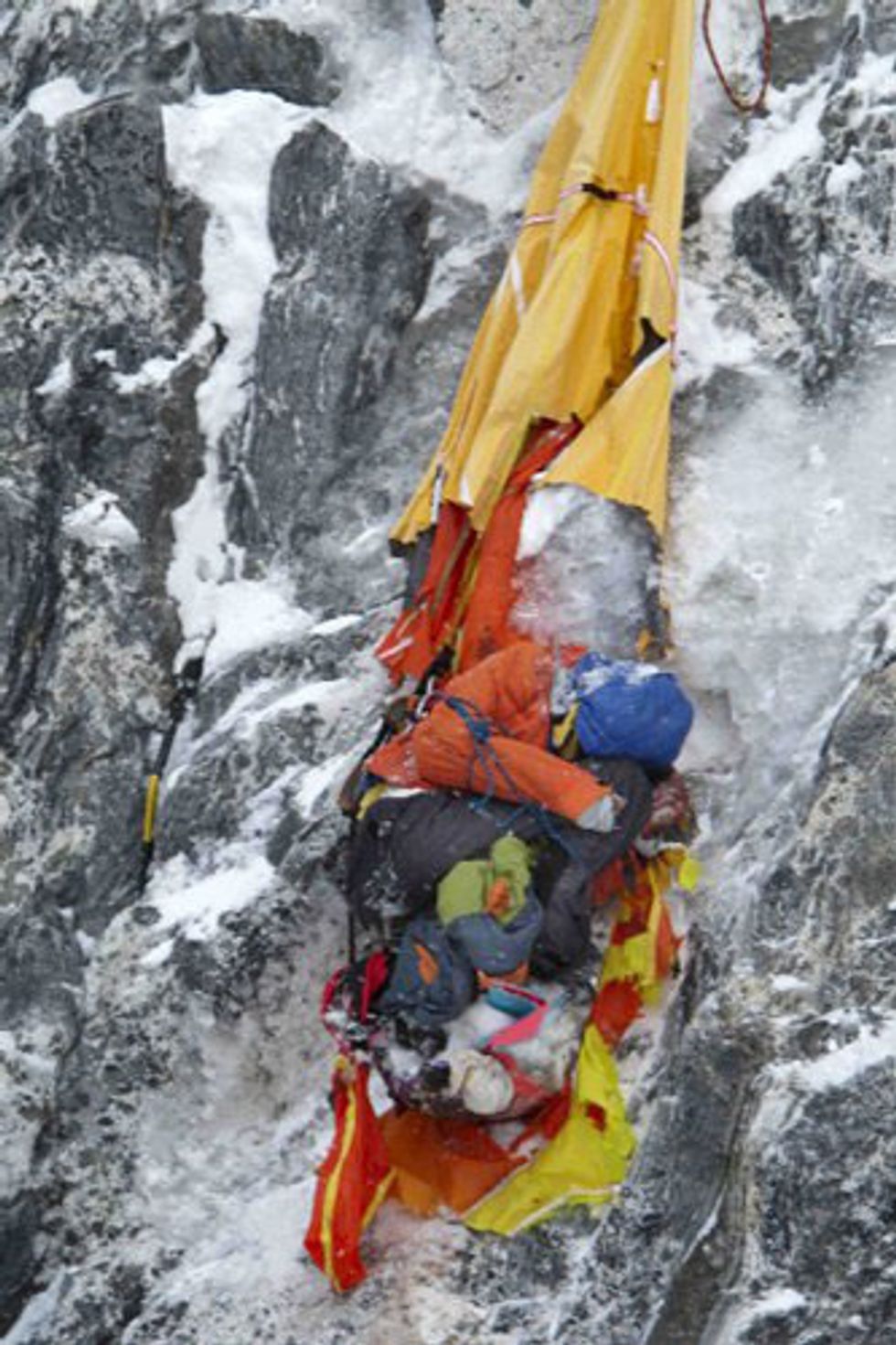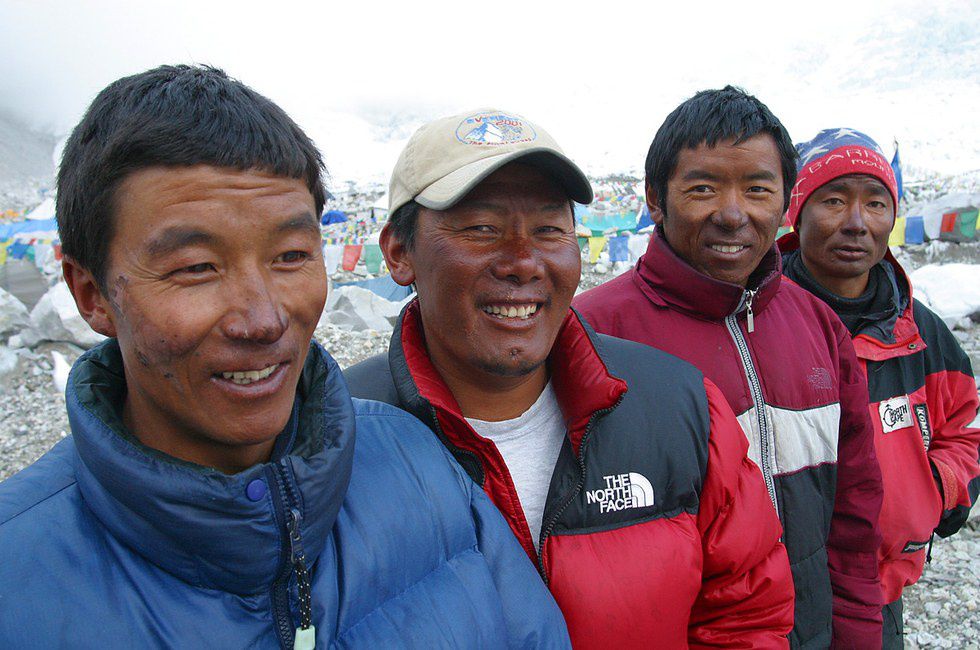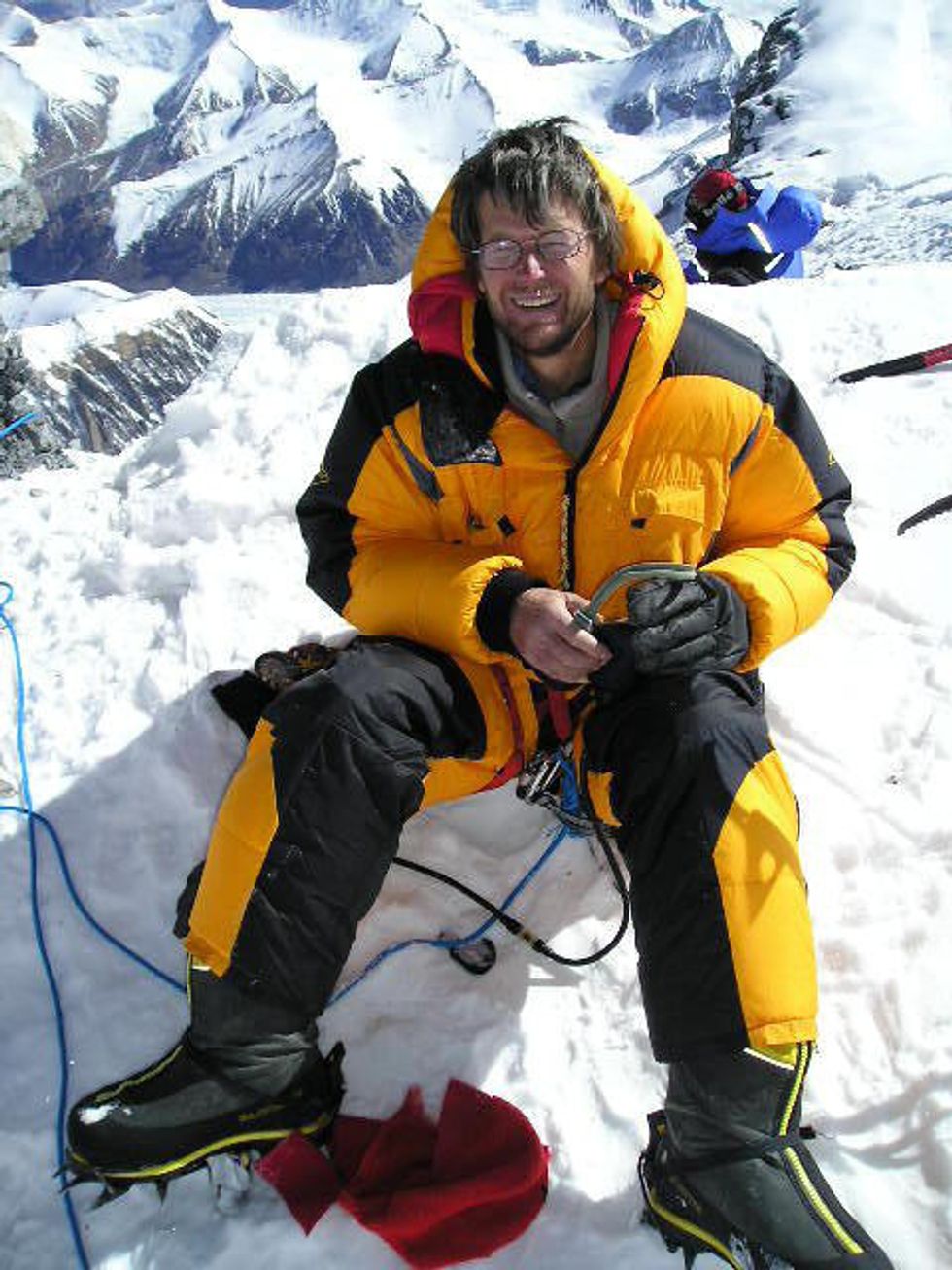Standing at a staggering 29,029 ft above sea level is the Nepalese “Goddess of the Sky”, Mt. Everest. Since George Mallory’s ascension in 1924, people worldwide have gathered in Kathmandu to start their journey to the highest point on Earth with a fever for glory and a large wad of cash. With 1 out of every 10 ascensions leading to death, what could possibly go wrong?
1. "The Death Zone"
At 26,000 ft lays The Death Zone. At this point the human body can no longer acclimate. In a literal sense, you begin to die and supplemental oxygen is generally necessary. Without it you feel yourself being slowly suffocated and are at risk for high altitude cerebral edema (HACE) among other diseases. The next remaining two to three days after this point are spent trekking to the summit and then safely descending back down to a lower altitude where regeneration can occur. Some symptoms and disorders you may encounter beyond this point are the aforementioned HACE, hypothermia, snow blindness, acute mountain sickness, frostbite and high altitude pulmonary edema (HAPE). No one has spent 48 hours without oxygen in this territory.
2. "The Rainbow Valley"
Just below the summit is an area called “The Rainbow Valley”. Though imagery of vibrant, happy colors come to mind with this term, it was actually the bright colored jackets and snow gear of the deceased bodies that dot the path to the summit which inspired this naming. Because of the danger inherent in search and rescues at this altitude, most of the bodies are left there to become frozen landmarks for climbers.
3. Everest's Most Dangerous Profession
Sherpa’s are an ethnic group that, because of their lifelong acclimation to high altitude, guide clients up to Everest’s summit. Two famous Sherpas, Apa Sherpa and Phurba Tashi, have summited the mountain 21 times each . . . a world record! Unfortunately, this job is difficult for even the most experienced and many Sherpa’s have been killed during their journey. In the 2014 season 16 Sherpa’s were killed in an avalanche, the largest group to perish since 1996.
4. 1996 Mt. Everest Disaster
A combination of traffic, poor planning, and severe weather caused the deadliest day in Mt. Everest history prior to the 2014 avalanche. Eight people perished during the descent on May 11th, a day the survivors will forever remember. The events inspired a feature length film, Everest, which pretty accurately describes the events of that day according to the accounts that were given. Several bodies are still intact and remain landmarks for climbers (such as the very famous “Green Boots") while others remain missing. The most incredible story comes from climber Beck Weathers who, after being left unconscious in Everest’s South Col, somehow woke up and began to walk to base camp without any assistance or oxygen. He lost his nose, large parts of his hands and a portion of his right arm from the resulting frostbite.
5. The Controversy of David Sharp
After not reaching the summit during a solo-expedition in 2004, David Sharp returned to finally summit Everest in 2006. Unfortunately, Sharp would not make it back down alive. Seeking assistance, Sharp huddled in “Green Boots Cave” (the final resting place of 1996 victim Tsewang Paljor), and awaited the mercy of incoming climbers. The controversy begins and ends with this: 40 people passed him by on their way to the summit and not one stopped to help. Various excuses were given to why he wasn’t inspected namely that they thought it was Green Boots himself or that they just did not know what else they could have done. There is no judgement on my part as I understand how severely dangerous it is to look out for anyone other than yourself up there but this story remains a testament to how extreme everything is up there. This is not the first time a nearly dead person has been left to die alone, the same thing happened in 1996 with Yasuko Nambo.
One of the most recognizable quotes about climbing comes from George Mallory. When asked why he wanted to climb Everest his response was simply, "Because it's there." As long as the mountain remains there, staring into the hearts of adventurers worldwide, the mountain will be climbed. To the majority it's a risk best left unthought of but to the 0.000001% (7,600 summiters), It's a dream worth dying for.
















































